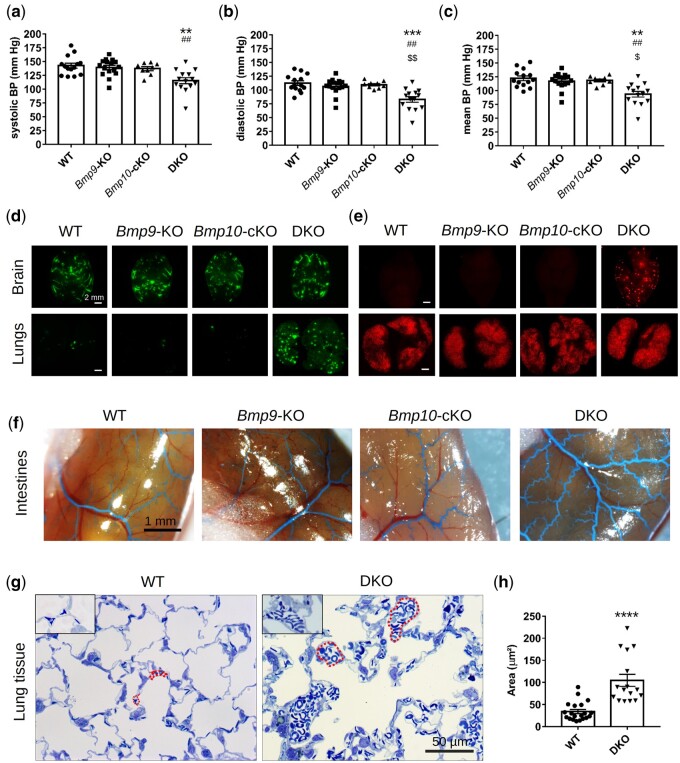Figure 3.
Combined loss of Bmp9 and Bmp10 leads to a reduction in arterial blood pressure (BP), vascular anomalies, and alveolar capillary dilatation in DKO mice. Non-invasive measurements of systolic (A), diastolic (B), and mean (C) BP in conscious adult mice (n = 9–16 male mice/group). Data are presented as the mean ± SEM and were analysed using Kruskal–Wallis tests followed by Dunn’s tests. **P < 0.01, ***P < 0.001 vs. WT. ##P < 0.01 vs. Bmp9-KO. $P < 0.05, $$P < 0.01 vs. Bmp10-cKO. Representative photomicrographs of brain and lungs of mice that received an injection of 45-µm fluorescent beads in the left cardiac ventricle (n = 5 female and 5 male mice/group, scale bar = 2 mm) (D) and of mice that received an intravenous injection of 15-µm fluorescent beads (n = 4 female and 3 male mice/group) (E). Representative photomicrographs of the intestines of latex-blue injected mice (F) (n = 3–5 male and 3–5 female mice/group, scale bar = 1 mm). Representative photomicrographs (G) and quantitative analysis (H) of the size of capillaries from 500-nm thick lung sections stained with epoxy tissue stain. The red dotted lines outline several capillaries (scale bar = 50 µm). Data represent the mean capillary area of n = 16–20 independent lung sections from three different female mice/group. Data are presented as the means ± SEM and were analysed using Mann–Whitney tests. ****P < 0.0001 vs. WT. Mice were injected with tamoxifen at the age of 2 months and analysed at the age of 5 months.

